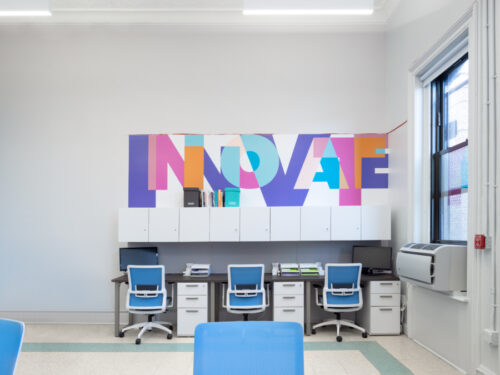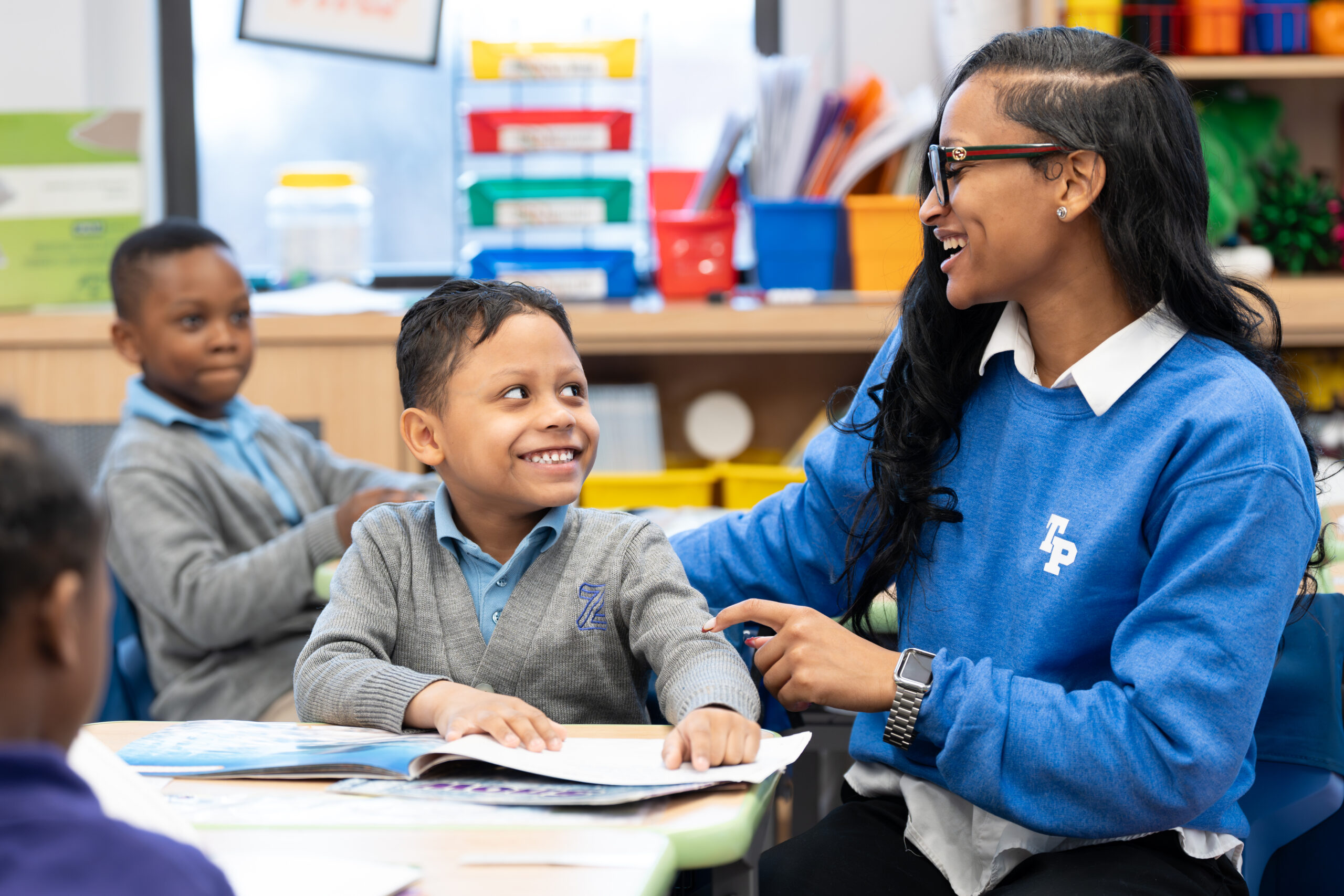
We are sharing our school reopen journey. If you would like additional information about anything we have mentioned below (or have suggestions for us, which we welcome), please let us know.
If you are a school employee, particularly a decisionmaker, your inbox is exploding with every new-fangled safety item that is supposedly a magic bullet to help you keep schools safe. But there’s always a caveat at the bottom of the page in fine print that the item is not proven to eliminate coronavirus risk. (If there is no caveat, you should probably run away fast!) The reality is that there are no magic bullets, and there is no way to eliminate all risk. Although our top priority in planning for school reopen is to ensure safe school environments, our goal cannot be to completely eliminate risk but rather to manage risk by layering the highest-leverage safety measures while keeping an eye on budget.
Taking Care of Adults Is Taking Care of Kids
We are deeply cognizant of the fact that we are going against the grain by asking people to come in to teach and serve kids at a time when public pressure for schools to delay their openings and remain fully remote is high. There is a lot of fear being promulgated right now. We understand these sentiments; we feel them ourselves. But there are also many encouraging yet important reasons to safely reopen our schools that the language of fear is obscuring.
As we work toward reopening, it is important that our staff understand that the way they feel deeply matters to us. They are impacting the life trajectories of children, and we at the leadership level work for them. My job is to empower and enable them to do their vital work unobstructed, removing all obstacles in their way. Taking care of our adults is taking care of our kids. During this past Summer Zeta U (our summer professional learning series), I spent a lot of time with our entire schooling team, sometimes daily, sharing the latest data, discussing relevant news stories around the nation, describing our planned school safety measures, and answering their questions in detail. Our leadership team and I make clear that our staff have as much of our time as needed because they need to know that their safety and wellbeing matter to us, and we are working around the clock to do our utmost for their safety and the safety of our students.
The Cost of Safety
A critical note before sharing our safety measures is that all of these measures are expensive. At a time when New York Governor Cuomo has announced a potential for additional 10-20% budget cuts across the board if federal funding does not come through, schools have to spend 10-20% more to ensure we can reopen safely while also operating in parallel a remote school model for those who cannot come to school in person (e.g., the immunocompromised). Government cannot cut essential funding: hospital funding (a matter of our collective wellbeing today), public school funding (a matter of our collective wellbeing tomorrow). Children’s futures must be protected, and savings must be found elsewhere. We cannot both open safely and simultaneously weather massive funding cuts.
Zeta’s Facility Upgrades and Safety Implementations to Reopen Our Schools
This chart summarizes our approach in a digestible way for staff and families, and the below list provides additional details and considerations. We share this list with the acknowledgement that there is no possible way to reopen with zero risk, even as COVID-19 case rates in NYC currently remain low, and that there is no one-size-fits-all to determining which safety measures are best for one’s school. We will continue to assess the efficacy of the below implementations and avail ourselves of new technologies and best practices that may come available throughout the year.
The following list reflects our major efforts but is not comprehensive; we may add additional measures as we deem necessary or appropriate. By sharing this information, we are by no means suggesting these are all the safety implementations schools should put in place, nor that schools must put all of the below implementations in place. The best advice we have received so far is that we must try our best to understand the data and science and then work within our space, need, and budget constraints. We have taken this approach and are forging ahead.
- Touchless hand sanitizer stations in every classroom and every shared space throughout the building
- We have engaged a vendor that installs these stations and refills them regularly to ensure we are never in a position of running out of hand sanitizer.
- Replacement of all faucets with touchless faucets
- Replacement of all soap and paper towel dispensers with touchless versions
- These above-two bullets are “nice to haves” rather than “must haves,” but our faucet knobs and dispenser buttons/levers were a little challenging for our young students to operate and we wanted to reduce the number of high-touch surfaces in our bathrooms, so we prioritized this investment.
- Installation of 3 portable sinks on every floor in our buildings that do not have sinks in classrooms
- To facilitate hand hygiene, we have added portable sinks to make handwashing facilities more accessible to staff and students. We contemplated installing these in every classroom, but we were concerned about the distraction of and immense burden on the porter (custodian) going into classrooms throughout the day and refilling the sinks. We also were advised by facilities project managers that the sinks may not be used or as helpful as one would think, that they might end up just being a place people stored classroom materials. We ultimately compromised and decided to place three portable sinks on each floor (except in one of our facilities where there is already a pre-existing sink in every classroom), thereby increasing handwashing stations while managing cost and avoiding extraordinary burden on our porter. Keep in mind that portable sinks add complexity and additional cost beyond just the cost of the sinks: porter’s time refilling, installation of soap and paper towel dispensers, “waterhog” mats and additional monitoring to ensure the sink areas stay dry. We note that we view these portable sinks as “nice to haves” rather than “must haves;” these were lower on our priority list because we could have made it work with existing sinks.
- Addition of toilet seat lids (and stickers reminding users to close the lid before flushing)
- These require training investment to make sure students and staff actually close lids before flushing. However, we understand bathrooms are a high-risk area of spread, with toilet splashing being one of the risk areas. The other issue with toilet lids is that they become a regular maintenance issue.
- Addition of partitions between urinals where needed
- Portable, clear, folding desk dividers (for student meals in classrooms and for use at adult desks)
- Before purchasing, make sure they are truly clear.
- Large rolling, clear barrier (7’x4’) in each classroom for teacher coaches and classroom observations
- We will share more on our thinking on “batching” in the future, but we understand that a coach or observer in the classroom could violate strict batching unless they are in the classroom (masked, of course) for less than 10 consecutive minutes (and less than 15 minutes total over a 24-hour period), or behind this type of impenetrable barrier
- Improved air purification via UV air purifiers in each room
- We considered UV Air Scrubbers, but not all of our schools have ducted HVAC systems, which would be required. UV Air Scrubbers were also expensive (cost and installation) without any particular evidence yet that they eliminate airborne coronavirus.
- Monthly replacement of filters in window air conditioner units
- Disinfecting wipes in every classroom and every shared space throughout the building so high-touch surfaces can be frequently and conveniently wiped down and any shared items wiped between use
- Individual sets of student supplies that are not shared
- Individual bins kept in front of student desks where they place their backpacks, lunches, coats, etc. instead of coat hooks
- Touchless garbage cans
- Clear sneeze guards at Security desk and Main Office desk
- Touchless thermometers
- We also considered thermal body temperature scanners. We liked the idea because they could potentially speed up morning drop-off, by about 5 seconds per student entering the building based on our calculations, which adds up to significant time. However, we are planning to take temperatures outdoors if possible, before students enter the building, and thermal scanners require an indoor/desk setup. We will also be using multiple building entrances to ensure faster dropoff and the ability to maintain social distance. Thermal body scanners are costly, so we decided to prioritize other purchases and see how dropoff goes with handheld touchless thermometers. We still may end up piloting a thermal body scanner at one of our schools.
- Touchless visitor sign-in system using iPad and sign-in app with health screening questionnaire (conducted by our staff)
- COVID-19-specific safety signage (COVID-19 sign 1, COVID-19 signs 2 and 3, and COVID-19 sign 4)
- Hallway and classroom floor stickers to encourage 6 feet of separation (we use word stickers for children to read)
- Use of disinfectant sprayer by porter to disinfect buildings at the end of each day
- Personal protective equipment for staff and students
- Staff – 3 cloth masks with Zeta logo, 2 clear/cloth masks, 2 clear disposable masks per week as needed, 2 clear face shields, disposable tri-ply masks on hand, disposable latex and non-latex gloves available in every classroom and room, and washable full-body gown service on hand as needed
- We have lost count of how many masks we have tried at this point! We purchased a good number of masks, partly because we kept discovering better ones. After purchasing cloth masks for staff and students, we found disposable clear masks, which we liked because they were breathable, easy to wear all day, and children could see teachers’ faces/smiles. But they were expensive, meant to be used and disposed, and do not come in children’s sizes. One of our teachers sent us information about reusable/washable clear/cloth masks that come in both adult and children’s sizes, and we felt we needed those to ensure children could see each other’s faces and smiles as well! (The issue with clear masks, however, is fogging.)
- We debated whether we need gowns. They are expensive and hard to come by. However, for our pre-kindergarten and kindergarten students, we felt our staff may want to use them, particularly in the earliest days when they need to comfort children who have difficulty separating from their parents or acclimating to school. We also gathered that a number of our staff felt more comfortable in general having access to gowns; that consideration was an important one too.
- Students – 2 cloth masks, 3 clear/cloth masks, 2 clear face shields, disposable tri-ply masks on hand as needed
- Visitors – disposable tri-ply masks on hand as needed (we’re generally not permitting visitors)
- Staff – 3 cloth masks with Zeta logo, 2 clear/cloth masks, 2 clear disposable masks per week as needed, 2 clear face shields, disposable tri-ply masks on hand, disposable latex and non-latex gloves available in every classroom and room, and washable full-body gown service on hand as needed
We are sharing our learnings and experiences in hopes that we can be a source of concrete encouragement, learning, and support amidst tremendous noise as schools take the necessary steps toward safely reopening their doors. In Safety Measures Part II, we will share our COVID-19 operational procedures.
